Visiting Tokyo for the first time can feel overwhelming. It’s a city of 14 million people, endless train lines, neon lights, and customs that might be unfamiliar. But don’t worry—this guide is here to help.
Whether you just landed at Narita or Haneda, are wondering where to stay, or need tips on what to eat and how to get around, we’ve got you covered. From public transportation and local etiquette to must-have gear and first bites of Japanese food, this article offers a simple starting point for your Tokyo adventure.
\Must-reads for Japan travelers⇩/
👉Handy phrasebooks and travel guides on Amazon Japan
- 1. Getting from the Airport to Tokyo
- 2. Where to Stay in Tokyo
- 3. Getting Around Tokyo
- 4. What to Eat First in Japan
- Popular Ramen Chains with English-Friendly Service
- Sushi (寿司)
- Convenience Store Food
- 5. Basic Etiquette Tips for Tokyo Visitors
- 6. Tokyo Packing Essentials
- 7. FAQ: First-Time Tokyo Travel Tips
- A Smarter Way to Bring Home Items You Can Only Buy in Japan
- Traveler’s Tip: Use Amazon for a More Comfortable Trip
- Important Points to Remember
- Conclusion
1. Getting from the Airport to Tokyo
Most travelers arrive in Tokyo via Narita or Haneda Airport, and navigating your way into the city can feel overwhelming. This section introduces the simplest and most reliable ways to reach central Tokyo, including trains, buses, and prepaid IC cards that make transportation easy from the moment you land.
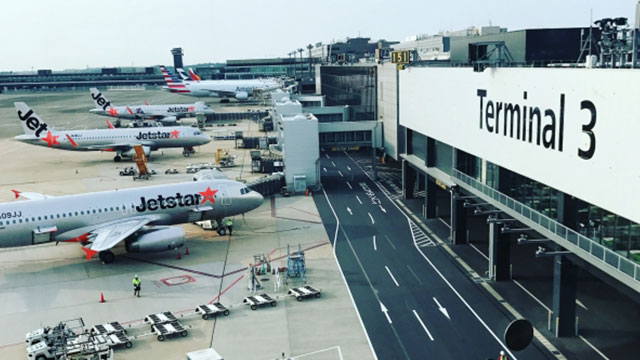
Narita International Airport (NRT)
- Narita Express (N’EX): Fast and comfortable access to major stations like Tokyo, Shibuya, and Shinjuku.
→ JR East Narita Express - Limousine Bus: Direct access to major hotels and city centers.
→ Airport Limousine Bus
Haneda Airport (HND)
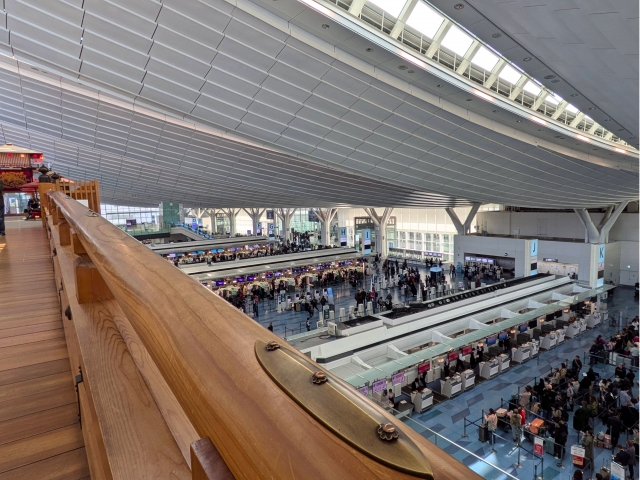
- Tokyo Monorail: Connects to Hamamatsucho Station.
→ Tokyo Monorail - Keikyu Line: Direct to Shinagawa and Asakusa.
→ Keikyu Railway - IC Cards (Suica/PASMO): Prepaid travel cards usable on almost all transport.
→ JR East Suica
\Must-reads for Japan travelers/
👉Handy phrasebooks and travel guides on Amazon Japan
2. Where to Stay in Tokyo
Tokyo is a massive city with neighborhoods that each offer a unique atmosphere. This section highlights popular areas like Shinjuku, Asakusa, and Ginza to help you get a feel for where to stay.

Popular Areas
Tokyo has many districts, but only a few are truly ideal for first-time visitors. These areas combine easy transportation, strong local character, and a variety of accommodations and dining options, making them perfect bases for exploring the city.
- Shinjuku: Vibrant nightlife, shopping, and easy access to transport. View on Google Maps
- Asakusa: Traditional atmosphere and proximity to Sensoji Temple. View on Google Maps
- Ginza: Upscale shopping and restaurants, perfect for luxury seekers. View on Google Maps
Book Your Tokyo Stay Easily
Here are three reliable websites where international travelers can book accommodation in Tokyo with ease. All support English and offer a wide range of options, from budget hostels to high-end hotels.
Booking.com
👉 https://www.booking.com/index.html
One of the most popular platforms for travelers worldwide.
-
Search by area, budget, or type of accommodation
-
Filter by reviews, distance to station, or free cancellation
-
Instant booking with no language barrier
Agoda
Great for Asia-based travelers, with frequent discounts.
-
Many Japanese properties offer better deals here
-
Easy map view and user-friendly interface
-
Excellent for mobile booking
Expedia
Ideal if you’re booking flights and hotels together.
-
Bundle options can save money
-
24/7 English-language customer support
-
Trusted by millions of users worldwide

If you’re visiting during peak seasons (like cherry blossom or Golden Week), book early to secure the best locations.
\Must-reads for Japan travelers/
👉Handy phrasebooks and travel guides on Amazon Japan
3. Getting Around Tokyo
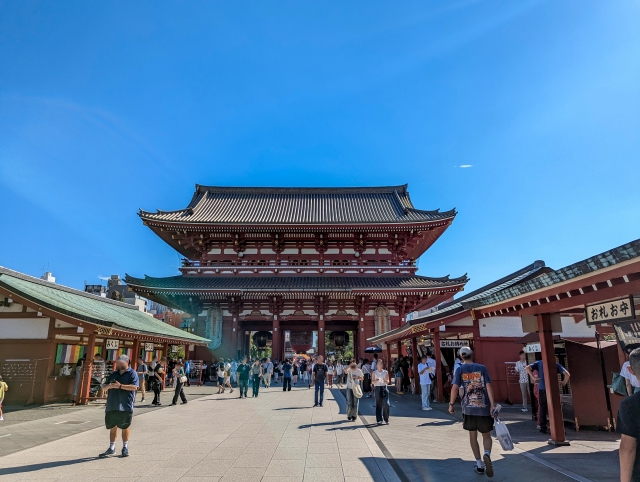
Getting around in Tokyo might look intimidating at first, but the city’s transport network is actually one of the most efficient and user-friendly in the world. With a bit of preparation, you’ll quickly get used to IC cards, train lines, and subway transfers. This section introduces everything you need to get moving smoothly—from simple tap-in cards to handy tourist passes.
- Google Maps works perfectly in English and supports route planning. Google Maps is your best friend for navigating Tokyo. It provides accurate train routes, times, and platform info—all in English. Just enter your destination and go.
→ Google Maps - IC Cards: IC cards like Suica and PASMO make transit effortless. Load once, then tap at gates for trains, buses, and even vending machines. No need to buy tickets each time or calculate fares.
→ Suica (JR East)
→ PASMO (Official Site). Load once, then tap at gates for trains, buses, and even vending machines. No need to calculate fares or handle coins. - Tourist Passes: These special tickets offer unlimited rides and are ideal for travelers planning to explore Tokyo extensively in a short time. They can save both money and hassle.
- Tokyo Subway Ticket (Tokyo Metro & Toei): Unlimited rides on Tokyo Metro and Toei subway lines for 24, 48, or 72 hours. Great for sightseeing days.
- JR Tokyo Wide Pass: Unlimited rides on JR East trains around Tokyo, including access to Mt. Fuji, Nikko, and Karuizawa. Valid for 3 days. Allows unlimited rides on JR East trains in the Tokyo region, including trips to Mt. Fuji, Nikko, and Karuizawa. Valid for 3 consecutive days.
4. What to Eat First in Japan
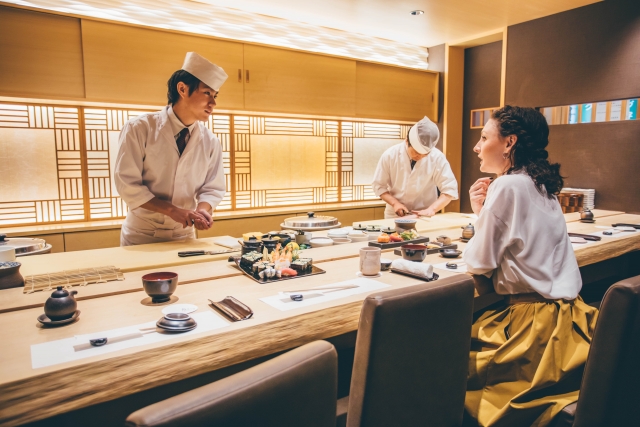
When you arrive in Japan, food is one of the first things that will capture your senses. Simple, elegant, and often surprisingly affordable, Japanese cuisine has earned global admiration—especially ramen and sushi. But why do people from all over the world line up for these dishes in Tokyo?
The answer lies in their balance of tradition, flavor, and accessibility. From street-level ramen counters to world-class sushi experiences, Japanese food is both an everyday comfort and a cultural treasure. In this section, we’ll give you a quick overview of dishes you won’t want to miss on your first trip. (We’ll explore them more deeply in dedicated articles.)
Ramen (ラーメン)
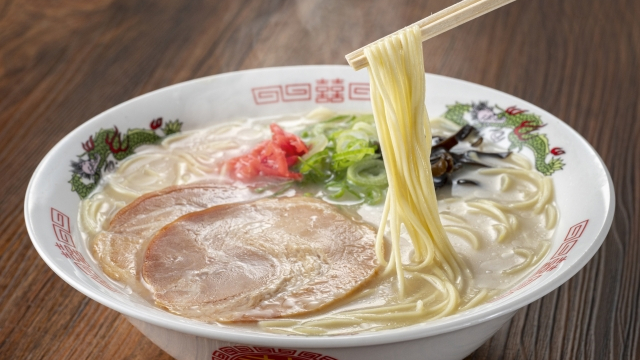
Delicious Tonkotsu ramen: a rich, creamy broth with tender pork and fresh toppings. A true taste of Japan
A steaming bowl of ramen is a great way to start your Japanese food journey. From rich tonkotsu (pork broth) to lighter shoyu (soy sauce) and miso-based varieties, Tokyo offers endless choices. Ramen shops are casual, fast, and approachable—even for travelers who don’t speak Japanese. With so many options across the city, it’s easy to enjoy this iconic comfort food like a local.
Popular Ramen Chains with English-Friendly Service
If you’re new to Japanese ramen, it helps to know which chains are easy for international visitors to navigate. Here are three well-known ramen brands that are not only delicious, but also welcoming to non-Japanese speakers.
Ichiran(一蘭)
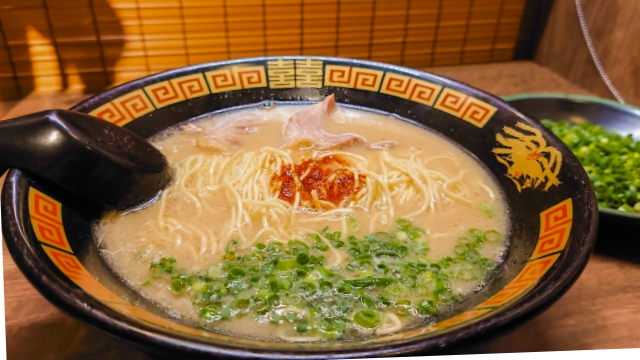
Originating in Fukuoka, Ichiran is famous for its tonkotsu (pork broth) ramen and unique “flavor concentration booths,” which let you enjoy your meal in private. The ordering process is foreigner-friendly, with picture-based vending machines and multilingual order sheets (including English). It’s one of the easiest places for visitors to enjoy authentic ramen without language barriers.
Ippudo(一風堂)
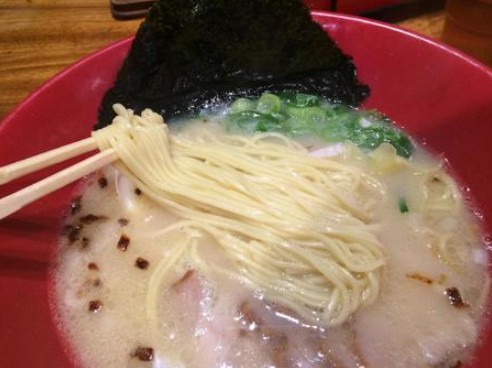
Another tonkotsu ramen brand from Fukuoka, Ippudo is now a global name with branches across Japan, Asia, and beyond. Known for its creamy broth and modern interior, Ippudo offers English menus in many locations and staff are often comfortable assisting international guests.
Tenkaippin(天下一品)
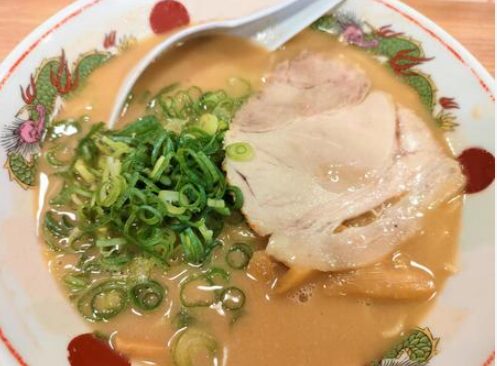
Founded in Kyoto, Tenkaippin (or “Tenichi” for short) is known for its rich, thick chicken-based broth—something quite different from the usual tonkotsu style. With over 200 locations across Japan, some branches offer English menus and are accustomed to foreign customers.
These shops typically have ticket machines with pictures, making ordering stress-free.
Sushi (寿司)
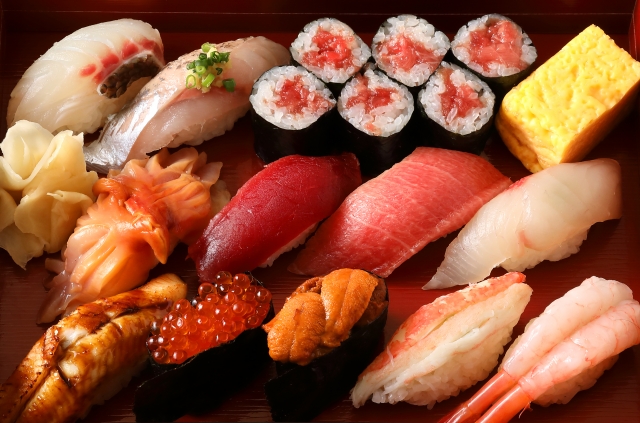
Sushi in Japan offers something for every traveler—from high-end omakase counters to casual conveyor belt spots and even convenient store-bought rolls. It’s more than just food—it’s a cultural experience worth exploring during your stay.
High-end sushi
For those seeking a truly refined dining experience, omakase-style sushi counters provide an unforgettable journey of taste. Master chefs prepare each piece using only the freshest, carefully selected seafood. Reservations are usually required, and while some places may not have English-speaking staff, many now welcome international guests. It’s a good idea to check in advance to ensure a smooth experience.
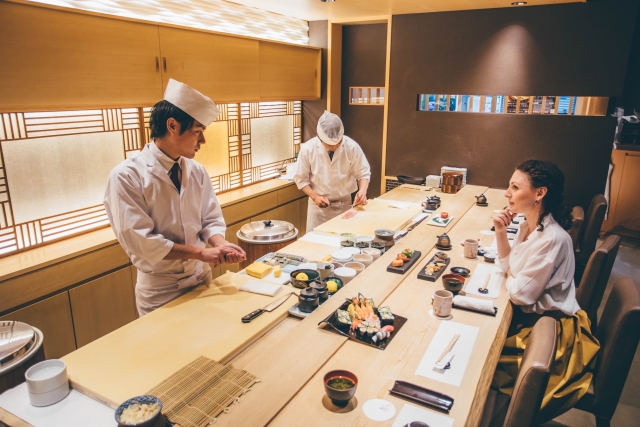
Conveyor belt sushi (Kaiten-zushi)
Conveyor belt sushi is casual, fast, and budget-friendly—perfect for first-time visitors. Many chains have English menus or touch-screen ordering systems.
Recommended chains:
-
Sushiro – Sushiro is Japan’s largest conveyor belt sushi chain, known for its affordability and extensive menu. Many locations, especially in major cities like Tokyo, offer multilingual touchscreens (English, Chinese, Korean), making ordering straightforward for non-Japanese speakers.
Further Information:
-
Kura Sushi – Kura Sushi offers a unique dining experience with its “Bikkura Pon” prize system, where customers receive a capsule toy for every five plates consumed. The chain emphasizes food safety and quality, with no artificial additives used in their dishes.
Further Information:
-
Genki Sushi – Fully English-friendly, with clear menus and locations in popular tourist areas.
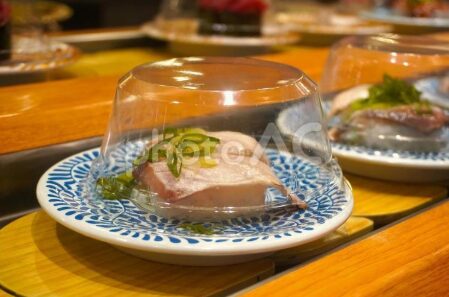
Convenience Store Food
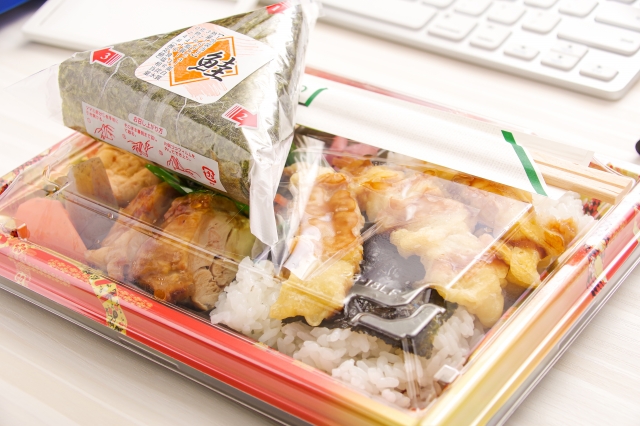
Japanese convenience stores (“konbini”) offer surprisingly high-quality food, perfect for a quick and affordable meal. Popular chains include:
| Store | Notable Items |
|---|---|
| 7-Eleven | Onigiri, bento boxes, desserts |
| Lawson | Healthy options, sweets |
| FamilyMart | Seasonal meals, balanced bentos |
You’ll find clear packaging, pictures, and sometimes English labels. Great for travelers on the go.
Try these Japanese food gift sets on Amazon Japan
Top English-Friendly Food Review Sites for International Visitors (Great for Pre-Trip Restaurant Research)
These websites are designed for international visitors to Japan, offering English navigation, reviews, and articles. Some restaurants also support reservations through these platforms, though not all.For reviews and restaurant recommendations, we suggest using this trusted English resource:
| Rank | Website | Highlights |
|---|---|---|
| 🥇 | Tripadvisor | The most English reviews. Trusted by travelers around the world. |
| 🥈 | ByFood.com | Designed specifically for inbound travelers. Fully searchable and bookable in English. |
| 🥉 | Japan Travel | Supported by official tourism bodies. Great for regional food and cultural context. |
5. Basic Etiquette Tips for Tokyo Visitors

Understanding a few basic cultural norms will help you enjoy Tokyo with confidence and respect. This section covers common etiquette tips like train manners, trash disposal rules, and when to remove your shoes, so you can blend in like a pro.
- Quiet on trains – No loud conversations or phone calls.
- Trash rules – Carry your trash; bins are rare.
- Shoes off – Remove shoes before entering homes and some restaurants.
- No tipping – Not expected in Japan.
For more: Japan National Tourism Organization: Travel Tips
6. Tokyo Packing Essentials
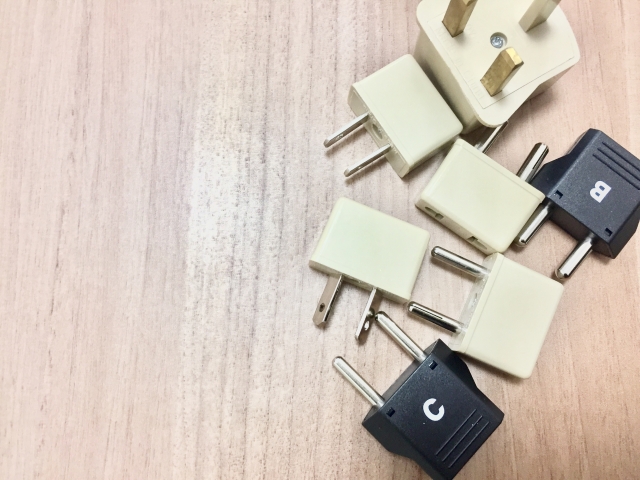
Preparing the right gear before your trip can save time and stress. This section lists practical items—from umbrellas to portable chargers—that travelers often find essential when navigating Tokyo’s busy streets and changing weather. One often overlooked but important item is a travel adapter, as Japan uses Type A plugs with 100V voltage, which may not be compatible with devices from other countries.
Don’t forget these:
- Foldable umbrella
- Mobile battery
- Travel wallet or security pouch
- Reusable water bottle
- Universal travel adapter (with voltage converter if needed)
Shop all your Tokyo travel must-haves here
7. FAQ: First-Time Tokyo Travel Tips
A: While some signs, menus, and staff in major Tokyo areas like Shinjuku, Shibuya, or Ginza may offer English, don’t expect widespread fluency. Outside Tokyo, in rural areas or smaller cities, English is rarely spoken, and even basic communication can be challenging. To navigate with ease, download a translation app like Google Translate (iOS, Android) for real-time text and voice translation. Learning basic Japanese phrases like
- ありがとう (Arigatou): Thank you
-
すみません (Sumimasen): Excuse me / Sorry
-
お願いします (Onegaishimasu): Please
-
失礼します (Shitsurei shimasu): Excuse me / Goodbye (used when leaving or interrupting)
will go a long way in making interactions smoother and showing respect.
Amazon Japan:
👉Easy Japanese for Travel –A very useful guide to have in case you want to travel to Japan. It includes tips for getting around, cuisines to try, museums and attractions to see, and everything you need to face an exciting trip to Japan.
A: 5–7 days is ideal to explore major sights like Shibuya, Asakusa, and Odaiba.
A: Budget travelers can manage with ¥10,000/day for food, transport, and attractions.
A: Spring (March–May) for cherry blossoms or autumn (September–November) for mild weather.
A Smarter Way to Bring Home Items You Can Only Buy in Japan

During your travels in Japan, you will discover special items that are full of the country’s unique charm. For example, there are limited-edition anime figures, local goods found only at their “sacred sites,” exquisite items of traditional craftsmanship, and delicious, uniquely Japanese foods prepared with time and care.
It’s only natural to want to bring a taste of its culture and flavors home with you, whether as the perfect gift for your loved ones, or a special memento for yourself.
However, there is always one challenge: your luggage.
-
“I found the perfect souvenir at a place I visited, but I hesitate because it’s difficult to carry it around all day while sightseeing.”
“I’d love to collect specialties from all over Japan, but considering the travel time and expense, it’s just not feasible. If only I could have everything delivered to my hotel…?”
It’s a shame to give up on these great finds for such reasons.
But there is a solution that many travelers to Japan are already using:
It’s a method of ordering items from online shops like Amazon and arranging for direct delivery to your hotel.
Traveler’s Tip: Use Amazon for a More Comfortable Trip

This method offers significant advantages for any traveler.
- Sightsee Hands-Free: Enjoy your day to the fullest without being weighed down by heavy shopping bags.
- Use your existing Amazon account or create a new one.
- Clear Delivery Dates: You can check the estimated delivery date when you order, allowing you to coordinate with your stay.
- Ship Directly to Your Hotel: Simply add your hotel as a new shipping address. This makes packing for your return flight incredibly easy.
- Unbeatable Selection: From local crafts and foods to everyday necessities, you can find an endless array of products from all over Japan.
Important Points to Remember
- Check the Estimated Arrival Date: When ordering, always confirm the “estimated delivery date.” Only use this method if you have plenty of time to receive the package during your stay.
- Confirm with Your Hotel First: Before you order, it is essential to ask your hotel if they are willing to accept packages for guests. Most major hotels are happy to do so, but confirming in advance is a mandatory courtesy.
- At Your Own Discretion: Please remember that arranging this is your own responsibility and is done at your own risk.

Order on Amazon, deliver to your accommodation. It’s the simple travel hack for a comfortable, luggage-free journey.
Conclusion
From your arrival at Narita or Haneda to your final meal in the city, this guide has walked you through the essentials for navigating Tokyo with confidence. We’ve covered transportation, accommodation, dining, cultural etiquette, and what to pack—all tailored for first-time visitors. Whether you’re exploring the city by train, trying your first bowl of ramen, or figuring out when to take off your shoes, you’re now equipped with the knowledge to enjoy your trip with ease.
Tokyo is more than just a destination—it’s the entry point to the rest of Japan. Whether you’re staying in the city or planning to explore the countryside and beyond, this guide was created to help every international visitor start their journey with confidence and joy.
And to make your experience even easier, you can even order souvenirs or useful travel gear directly from Amazon Japan and have it shipped to your hotel. That way, you can avoid carrying heavy shopping bags and simply pack everything into your suitcase when you leave.
Explore our curated picks here: My Recommended Travel Gear on Amazon Japan
We hope this guide helps you travel more smoothly, connect more deeply with local culture, and enjoy every moment of your Tokyo adventure. Safe travels!
\Must-reads for Japan travelers⇩/
👉Handy phrasebooks and travel guides on Amazon Japan



